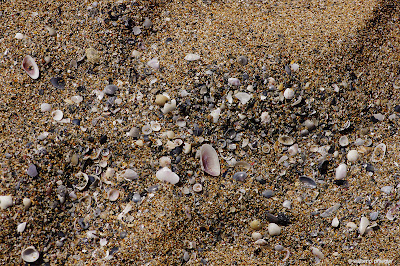We traveled to the Baratz Lake and the nearby coastal area called Porto Ferro in the Sassari Province of Sardinia. The area had such a high diversity of landscapes, plants and animals that we spent the whole day here. The coast of Porto Ferro is situated at the northern edge of the Capo Caccia/ Isola Piana Marine Protected Area and its 2 km long beach is guarded by 3 towers built in the 17th century. Location: Porto Ferro. Date: 02.05.2013.
Wir besuchten den See namens Lago Baratz und das nahegelegene Küstengebiet Porto Ferro in Provinz Sassari, Sardinien. Diese Gegend hatte eine so hoche Vielfalt der Landschaften, Pflanzen- und Tierarten, dass wir den ganzen Tag hier verbracht haben. Die Küste von Porto Ferro liegt am nordlichen Rand des Mehresschutzgebietes Capo Caccia/ Isola Piana und ihr 2 km langer Strand ist von 3 Türmen aus dem 17. Jahrhundert bewacht. Ort: Porto Ferro. Datum: 02.05.2013.
Felkerestünk egy Lago Baratz nevű tavat és a közeli, part menti területet, melynek Porto Ferro a neve Szardínia Sassari provinciájában. A terület sokszínűsége a tájat, a növény- és állatfajokat tekintve olyan hatalmas volt, hogy az egész napot itt töltöttünk. Porto Ferro partjai a Capo Caccia/ Isola Piana nevű védett tengeri terület északi szélén kezdődnek. Az itteni strand, melyet három 17. századi torony őriz, 2 km hosszú. Hely: Porto Ferro. Dátum: 2013.05.02
Bigger map
The coast has retained its natural state:
Die Küste hat ihren natürlichen Zustand behaltet:
A part megőrizte természetes állapotát:
A very old heath:
Eine sehr alte Heide:
Egy nagyon öreg hangabokor:
Eine sehr alte Heide:
Egy nagyon öreg hangabokor:
A nice flower of the carnation family:
Eine schöne Blume aus der Familie der Nelkengewächse:
Egy szép szegfűféle:
Pygmy Cudweed (Evax pygmaea):
Zwergedelweiß (Evax pygmaea):
Evax pygmaea a fészkesek családjából:
Coastal Medick (Medicago marina):
Strand-Schneckenklee (Medicago marina):
Tengerparti lucerna (Medicago marina):
A broomrape (Orobanche sp):
Eine Sommerwurz (Orobanche sp):
Egy szádor (Orobanche sp):
A Valantia species:
Eine Valantia-Art:
Egy Valantia-faj:
A male Scotolemon harvestman:
Ein männlicher Weberknecht aus der Gattung Scotolemon:
Egy hím kaszáspók a Scotolemon genuszból:
An undetermined Dasylobus sp harvestman:
Eine unbestimmte Dasylobus sp Weberknechtart:
Egy meghatározatlan Dasylobus sp kaszáspókfaj:
Female of Oecobius navus spider:
Weibchen der Spinne Oecobius navus:
Az Oecobius navus pók nősténye:
A very rare goblin spider species, Silhouettella loricatula:
Eine sehr seltene Zwersechsaugenspinne, Silhouettella loricatula:
Egy nagyon ritka goblinpók, a Silhouettella loricatula:
Three different velvet ants (Mutillidae):
Drei verschiedene Ameisenwespen (Mutillidae):
Három különböző hangyadarázs (Mutillidae):
This one is Sigilla dorsata:
Diese heißt Sigilla dorsata:
Ennek Sigilla dorsata a neve:
A big darkling beetle:
Ein großer Schwarzkäfer:
Egy nagy gyászbogár:
Physiphora alceae flies mating:
Paarung von Physiphora alceae Fliegen:
Physiphora alceae foltoslegyek párosodása:
As we were busy searching for arthropods on the coast, suddenly millions of By-the-wind Sailors (Velella velella) appeared on the sea and they were quickly washed ashore. These are floating colonial hydrozoans with a size of 2-5 cm:
Als wir an der Küste für Gliederfüßer suchten, plötzlich erschienen Millionen von Segelquallen (Velella velella) auf dem Meer. Dann wurden sie schnell angeschwemmt. Diese sind schwebende koloniale Hydrozoen mit einer Größe von 2-5 cm.
Ahogy ízeltlábúak után kutattunk a parton, hirtelen milliónyi vitorlás hidraállat jelent meg a tengeren (Velella velella), majd hamar partra sodródtak. Ezek lebegő, telepes testű csalánozók és kb. 2-5 cm nagyságúra nőnek.
Some more marine animals: barnacles on a rock:
Weitere Meerestiere: Rankenfußkrebse auf einem Fels:
További tengeri állatok: tengeri makkok egy sziklán:
A cuttlefish bone:
Der Schulp einer Sepie:
Egy szépiacsont:
Shells:
Muscheln:
Kagylóhéjak:
Ball of dead leaves of the Neptune Grass (Posidonia oceanica):
Tote Blätter des Neptungrases (Posidonia oceanica) in Form eines Seeballes:
Neptunfű (Posidonia oceanica) elhalt levelei gömbbé formálódva:































No comments:
Post a Comment